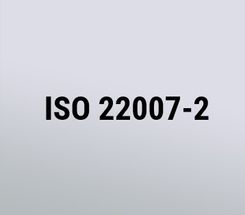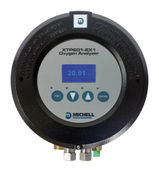STANDARD DIN EN ISO 22007-2
Precise measurement results for your materials - Discover the advantages of DIN EN ISO 22007-2 and our Hot Disk measuring instruments!

The ISO standard DIN EN ISO 22007-2 defines the "Hot Disk Method", a special method for determining the thermal conductivity and thermal diffusivity of plastics. This transient area source method is particularly suitable for testing homogeneous and isotropic materials as well as anisotropic materials with a uniaxial structure.
Within the scope of this method, C3 Analysentechnik provides the following specialized measuring instruments, which fully comply with DIN EN ISO 22007-2:2015:
- Hot Disk TPS 3500
- Hot Disk TPS 2500 S
- Hot Disk TPS 2200
- Hot Disk TPS 1500
- Hot Disk TPS 1000
In addition, there are devices that operate similarly to the standard, but do not fully meet all requirements:
- Hot Disk TPS 500 S
- Hot Disk TPS 500
- Hot Disk M1
The standard itself is available for a fee from Beuth Verlag.
Request information about STANDARD DIN EN ISO 22007-2 now

Thermal conductivity sensors: STANDARD DIN EN ISO 22007-2
Precise measurement results for your materials - Discover the advantages of DIN EN ISO 22007-2 and our Hot Disk measuring instruments!
Product classification STANDARD DIN EN ISO 22007-2
Product categories
Applications
Manufacturers of similar products
Find more thermal conductivity sensors and related products
Find STANDARD DIN EN ISO 22007-2 and related products in the theme worlds
Topic world Sensor technology
Sensor technology has revolutionized the chemical industry by providing accurate, timely and reliable data across a wide range of processes. From monitoring critical parameters in production lines to early detection of potential malfunctions or hazards, sensors are the silent sentinels that ensure quality, efficiency and safety.

Topic world Sensor technology
Sensor technology has revolutionized the chemical industry by providing accurate, timely and reliable data across a wide range of processes. From monitoring critical parameters in production lines to early detection of potential malfunctions or hazards, sensors are the silent sentinels that ensure quality, efficiency and safety.




